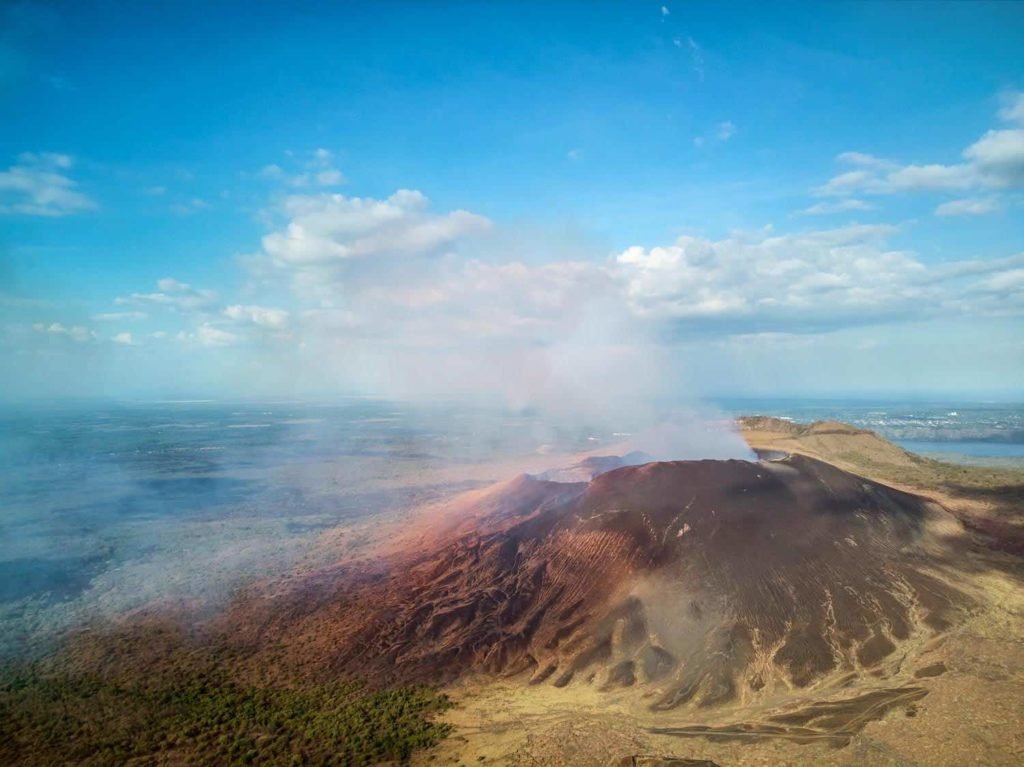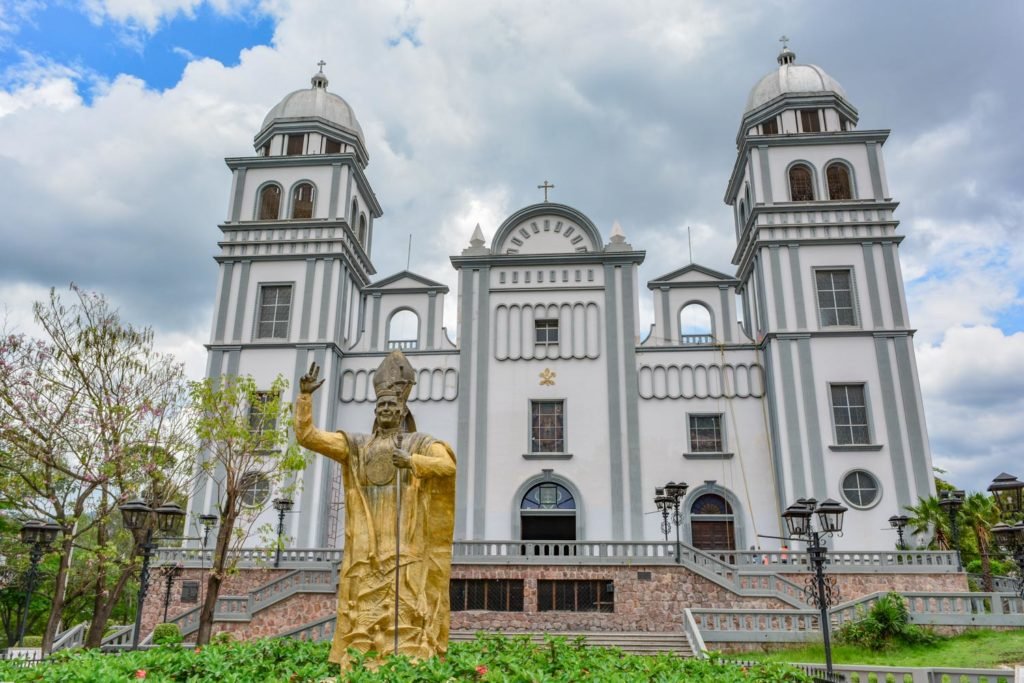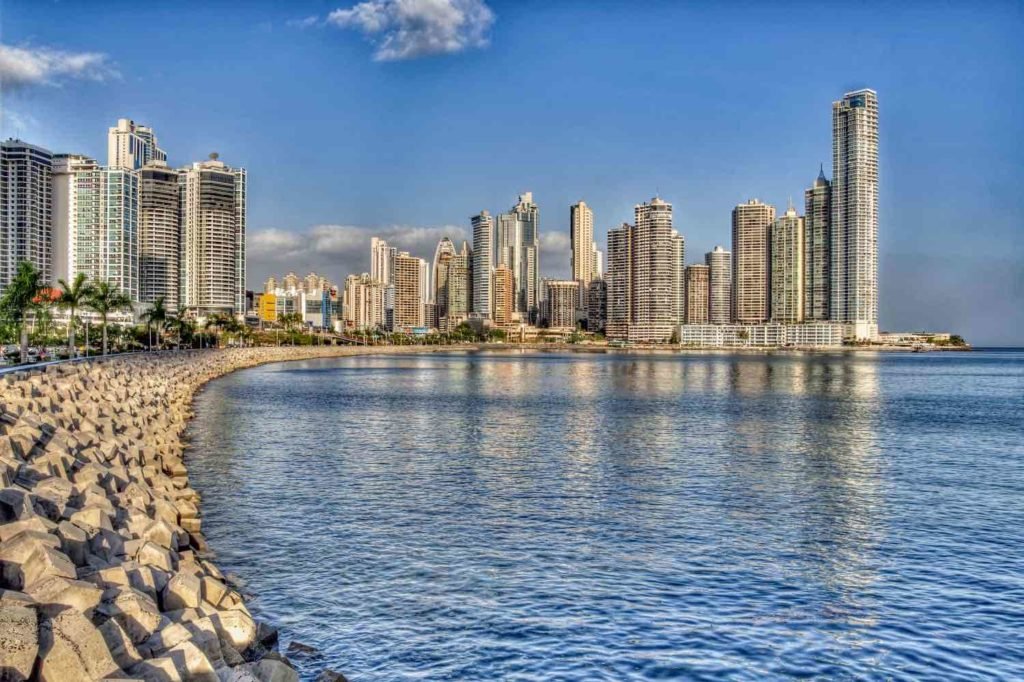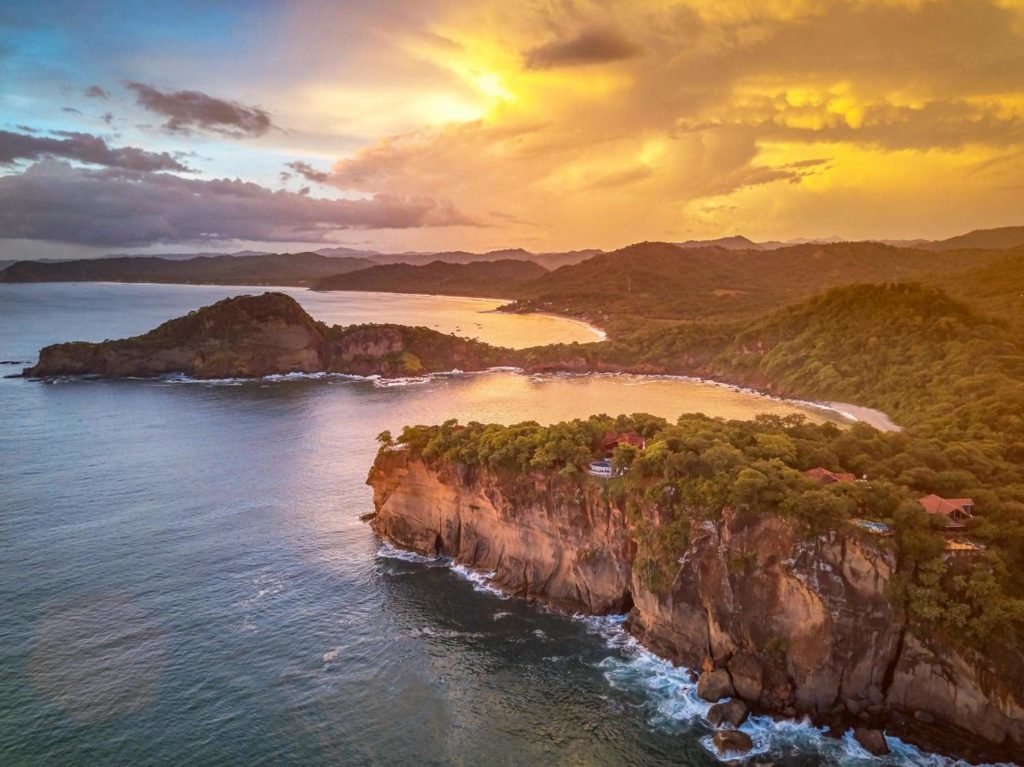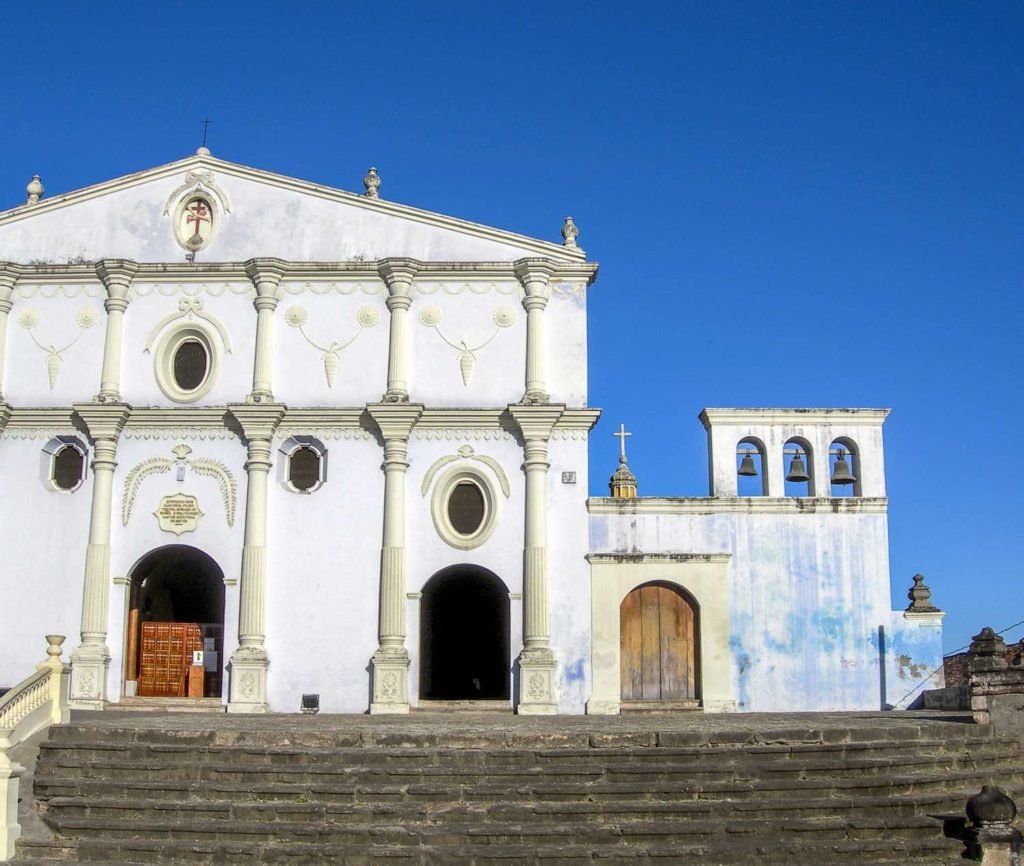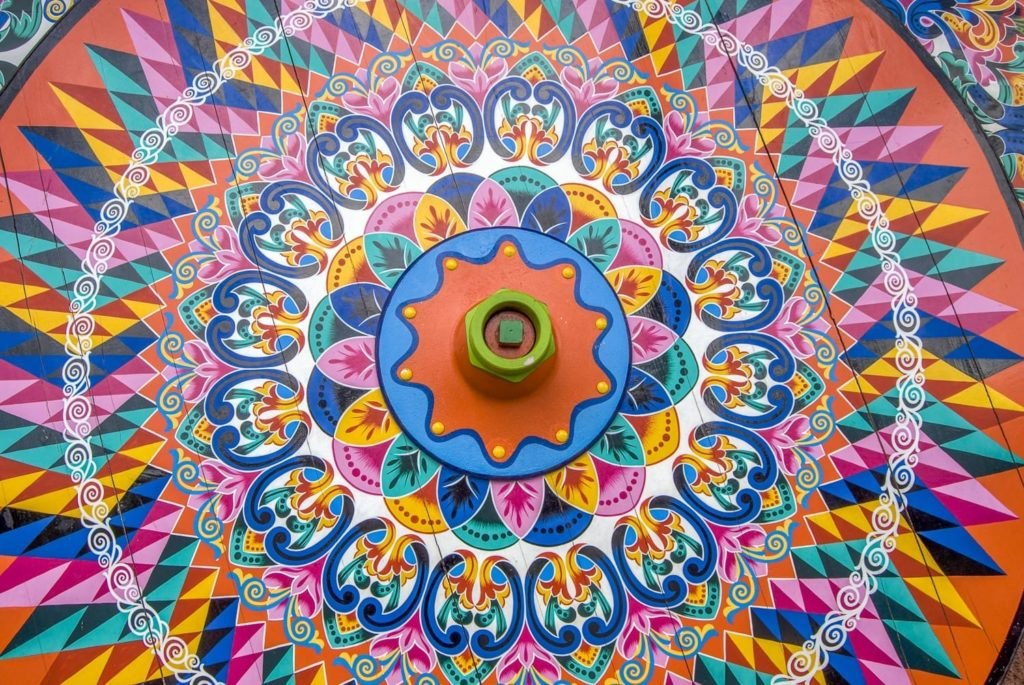Page Menu
Managua & Mototombo
Nicaragua’s capital city rests on the southwestern shore of Lake Xolotlán.
The city is guarded by the Momotombo stratovolcano, towering in the distance.
Humans have inhabited this lakeshore for millennia–human footprints dating back 4,000 years have been found preserved in rock-hard volcanic mud.
Managua: Spanish and Nahuatl Roots
Spanish Managua was established in 1819, on the site of a former Nahuatl settlement.
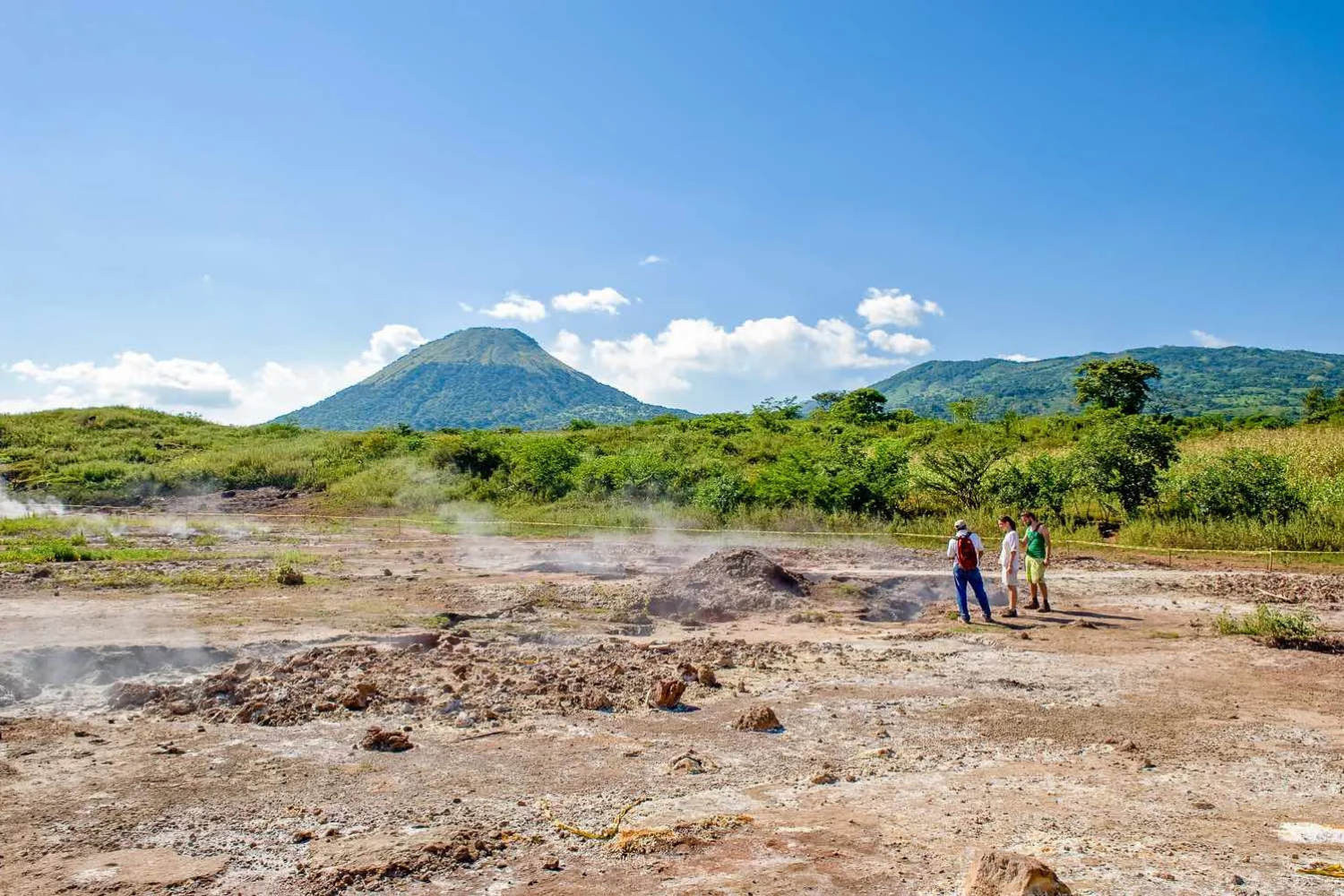
Managua became the capital of Nicaragua in 1852. The city was chosen as a split-the-difference compromise between liberal Leon and conservative Granada.
This choice was a mixed blessing. Managua enjoys pleasant weather for much of the year, but a seismic fault runs under the city.
Severe earthquakes are expected at least once every fifty years.
Managua’s New Commercial Zones
In the last century, devastating tumblers came in 1931 and 1972.
The 1972 quake destroyed much of the city, including the Catedral Santiago de los Caballeros.
Consequentially, most of the city’s new commercial zones are found in the south.
Park of Peace
While it’s undeniable that Managua has its faults, its citizens exhibit compensatory resilience.
Even after decades of dictatorship and revolution, you’ll find hard evidence of forgiveness and reconciliation here.
The Park of Peace, located near the old cathedral, displays the burned and concrete-encrusted remains of weapons—AK47s and even an entire tank—discarded after the civil war between the Contras and Sandinistas.
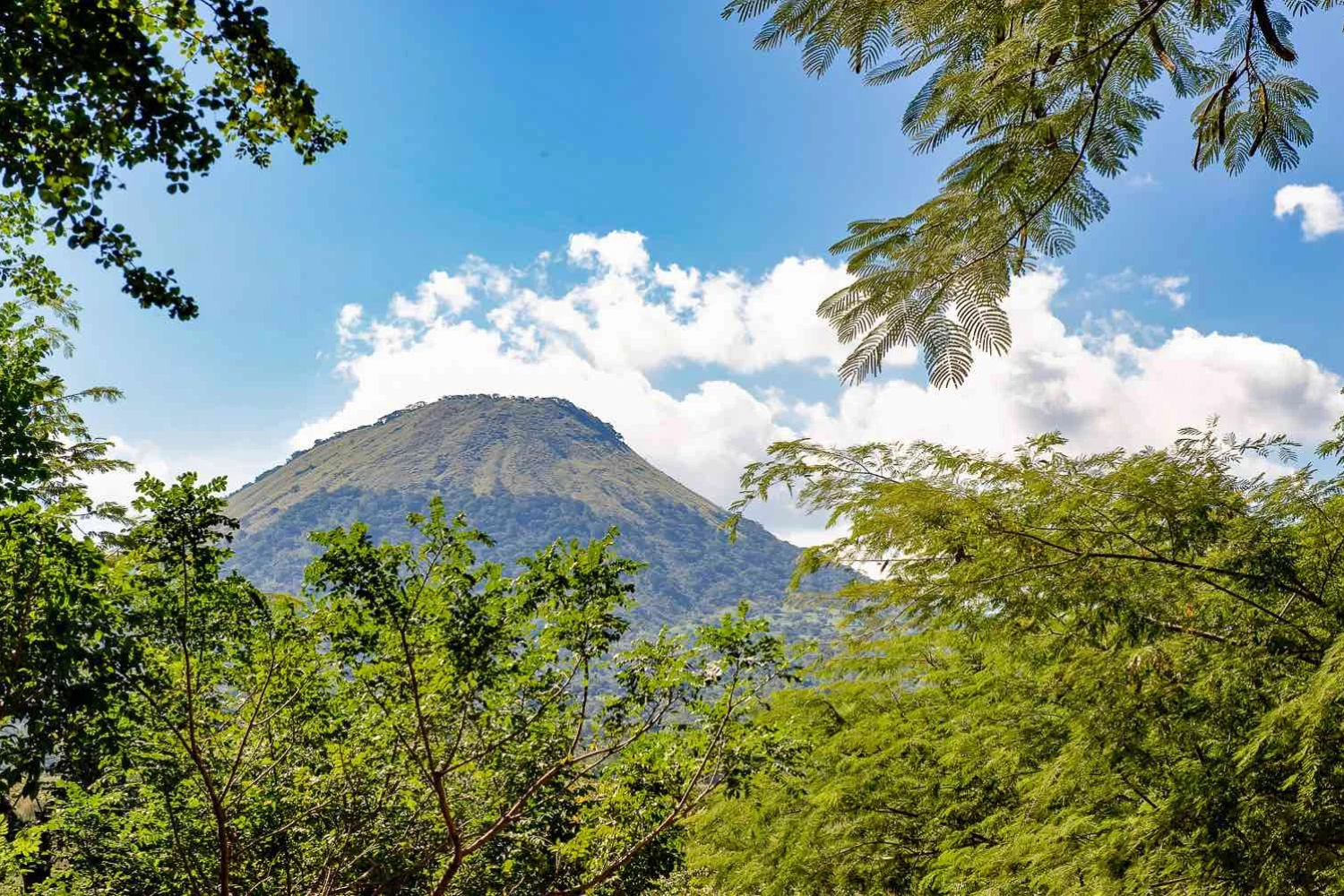
Loma de Tiscapa National Historic Park
Recent history looms large in Managua.
Visible from across the city, a giant metal silhouette of General Augusto Sandino rises above Loma de Tiscapa—the National Historic Park.
This site once housed both a presidential palace and a prison, built on the rim of a volcanic crater lake.
Rich History
Other worthwhile mentions include the lakefront boardwalk, the Simon Bolivar monument, the National History Museum, and the new cathedral.
The lavish National Theater and nearby park are named in honor of Rubén Dario, Nicaragua’s most celebrated poet.
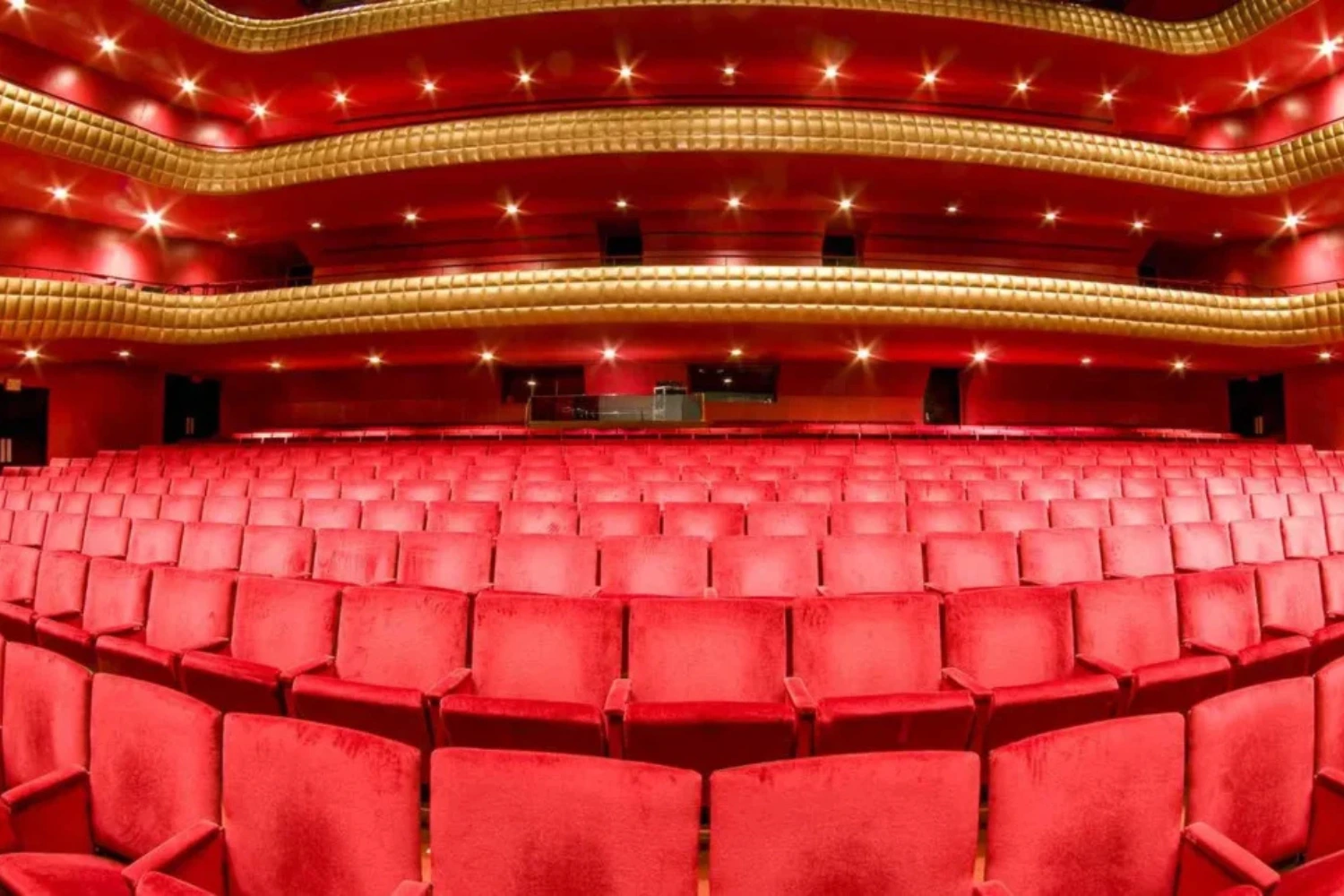
What to do in Managua
What is the Weather Like?
Managua unfolds under a persistent tropical sun, where daytime highs usually range from 29–32 °C (85–90 °F) and nights offer slight relief around 22–24 °C (72–75 °F).
The dry season (November–April) brings bright skies, warmer daytime temperatures, and minimal rain—perfect for wandering the city or lakeshore.
From May through October, the rains arrive, peaking in September and October, when afternoon showers transform the landscape into lush green—ideal for travelers who don’t mind occasional downpours.
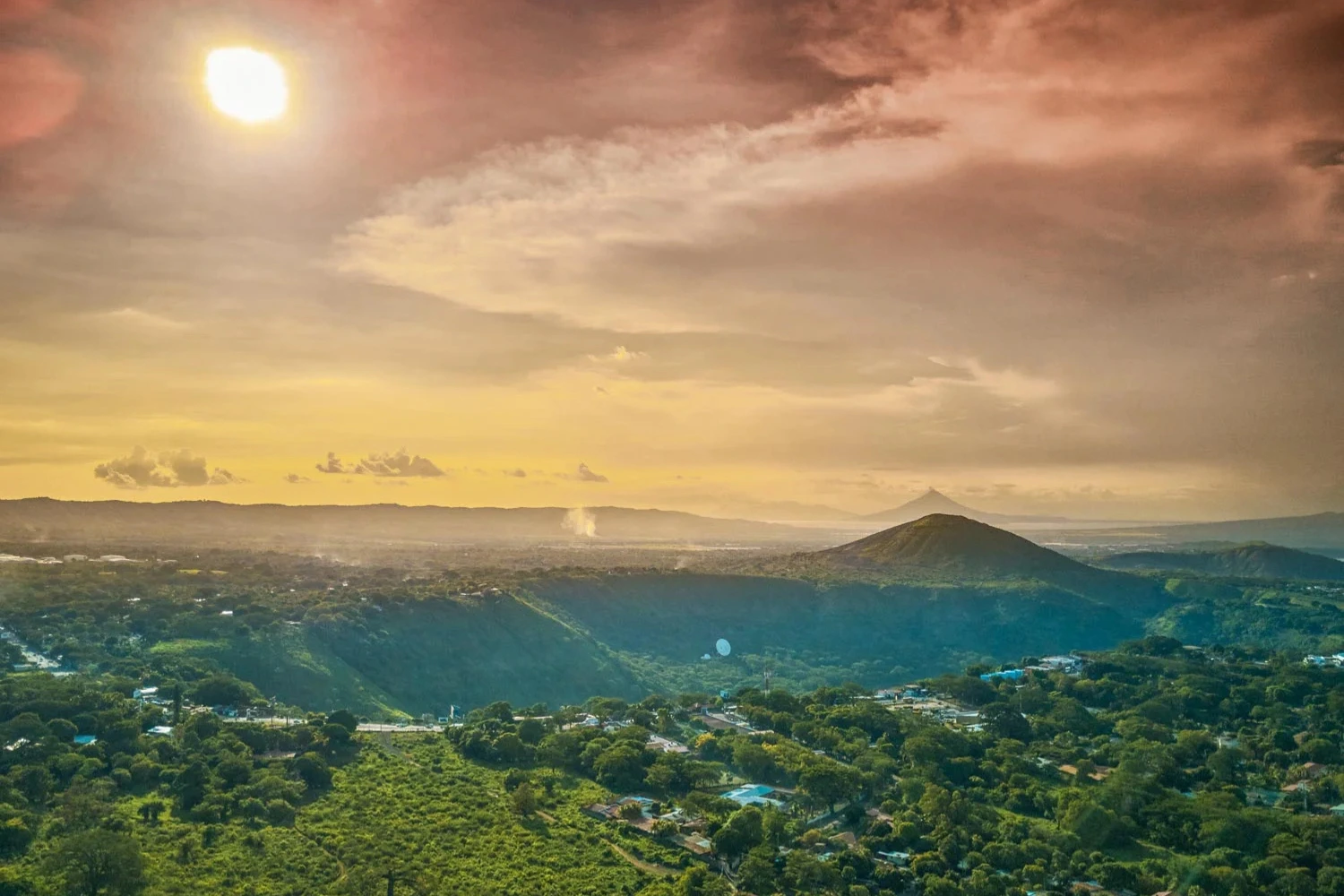
Getting There
Direct flights link Managua to Miami (2.5 hours) and Atlanta (under 4 hours). Regional flights connect the capital to San Jose and Panama City.
Private land transfers can be arranged from northern Costa Rica (2 hours) and southern Honduras (3.25 hours).
Start your journey today
LANDED delivers the finest in custom, private travel to Central America, South America, and Antarctica. These regions are our passion; we know them first-hand and by heart. Speak with one of our travel designers and let us create a tailored itinerary for you in Managua.
How to combine Managua
Have some extra time? Here are some options for you to combine with.

